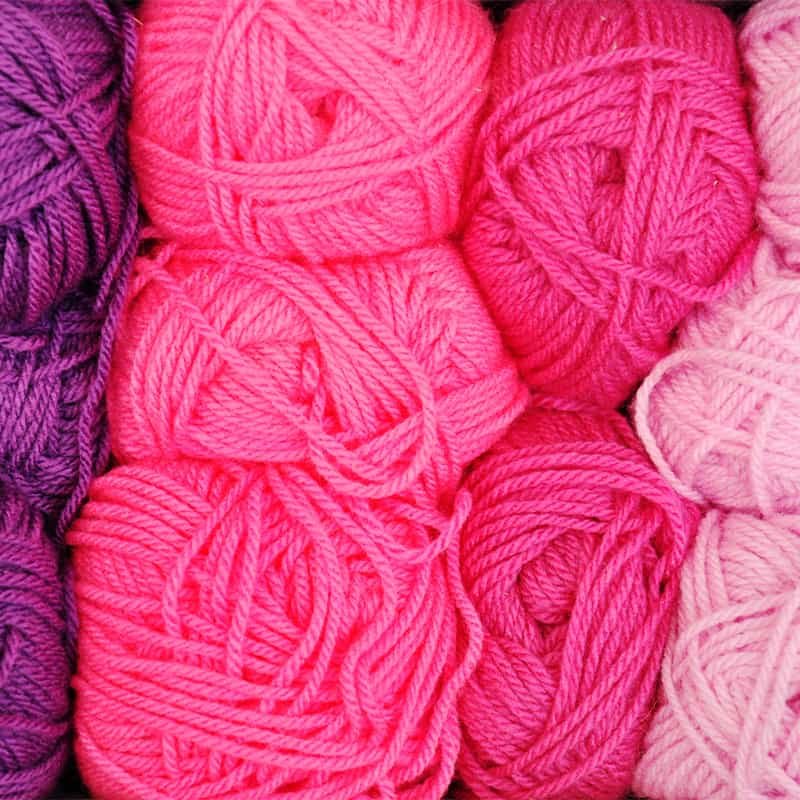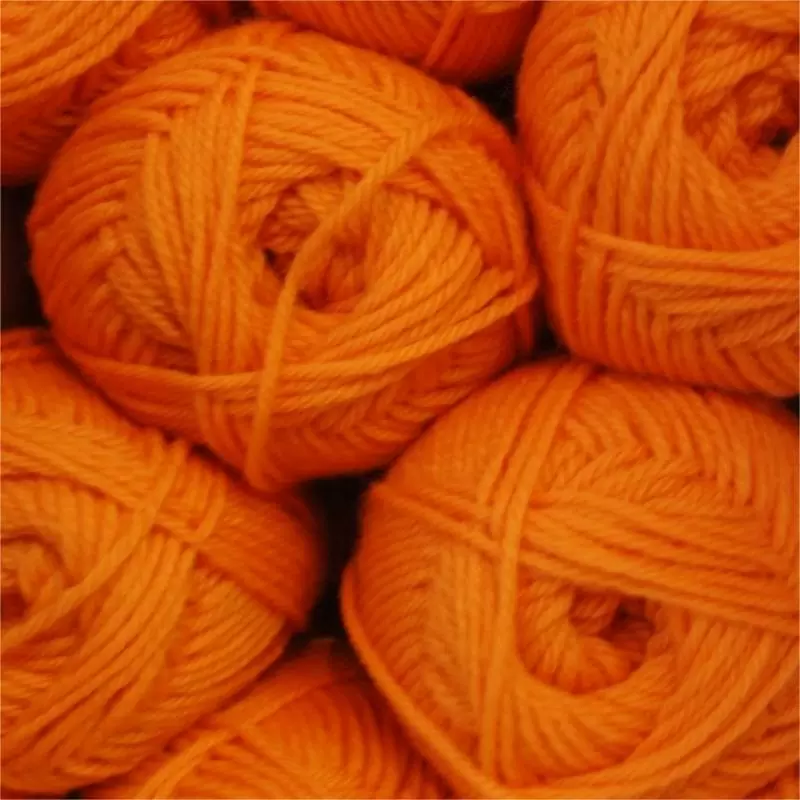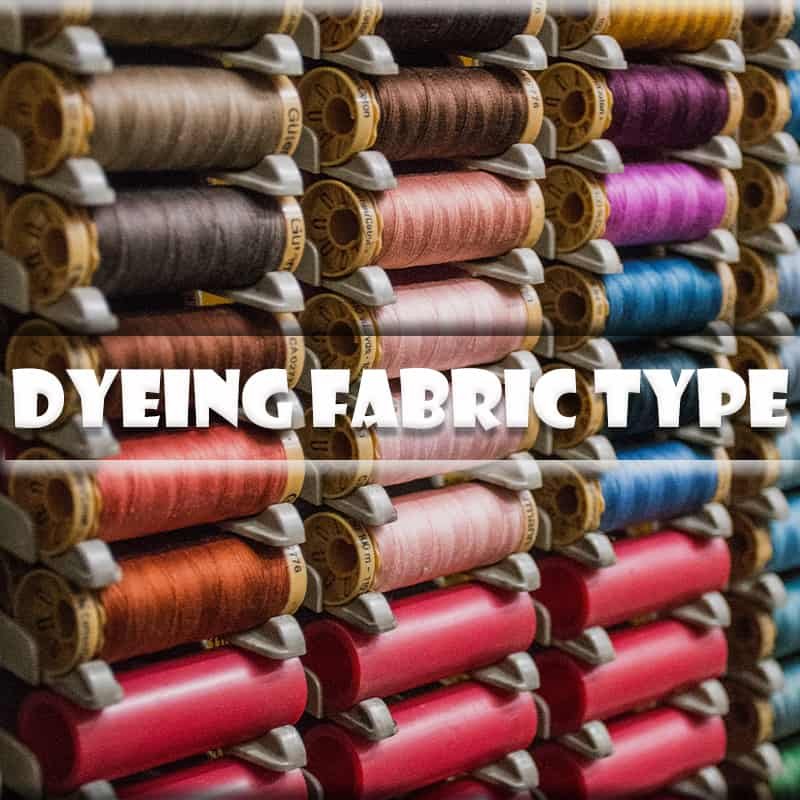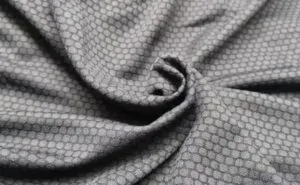There are several types of dyes that are commonly used in the textile industry:
Fiber-Reactive Dyes

Fiber-reactive dyes are a type of dye that forms a chemical bond with the fibers of the textile material. This bond is permanent and resistant to washing and fading, making fiber-reactive dyes a popular choice for dyeing fabrics that will be used in clothing and other applications where colorfastness is important.
There are several types of fiber-reactive dyes, including vinyl sulfone dyes, monochlorotriazine dyes, and acrylic dyes. These dyes are applied to the textile material in a liquid form and react chemically with the fibers to form a bond. The reaction between the dye and the fiber is usually facilitated by the use of a chemical called a “coupler” or “reactant,” which is added to the dye bath.
One of the main advantages of fiber-reactive dyes is their excellent colorfastness. Because they form a chemical bond with the fibers, they are resistant to washing and fading and retain their color over time. They also have good lightfastness and are resistant to fading when exposed to sunlight.
Another advantage of fiber-reactive dyes is their ability to produce bright, vibrant colors. They are particularly effective at dyeing cellulose fibers such as cotton, linen, and rayon, but they can also be used to dye other types of fibers such as silk and wool.
Fiber-reactive dyes are typically used in dyeing processes that involve immersion of the textile material in a dye bath, but they can also be used in other methods such as printing and painting. They are a popular choice for dyeing natural fibers, but they can also be used to dye synthetic fibers such as polyester and nylon.
Direct Dyes

Direct dyes are a type of dye that can be applied directly to textile materials without the need for a mordant or other chemical to fix the dye to the fiber. They are water-soluble and are applied in a liquid form, usually as a dye solution.
Direct dyes are absorbed directly into the fibers of the textile material and bond to the fiber through Van der Waals forces, hydrogen bonding, and other weak interactions. They are not as colorfast as other types of dyes, such as fiber-reactive dyes, but they are easy to use and produce vibrant, bright colors.
Direct dyes are a good choice for dyeing cellulosic fibers such as cotton, linen, and rayon, as well as some synthetic fibers like nylon. They are typically used in a dyeing process that involves immersion of the textile material in a dye bath, but they can also be applied to fabrics using techniques such as printing and painting.
One of the main advantages of direct dyes is their ease of use. They do not require the use of mordants or other chemicals to fix the dye to the fiber, which makes them a good choice for home dyeing and other DIY projects. They also produce bright, vibrant colors that are resistant to fading in sunlight.
However, direct dyes are not as colorfast as other types of dyes, and they may fade or wash out over time. They are also more sensitive to water pH and may change color when exposed to acidic or basic conditions. To improve the colorfastness of fabrics dyed with direct dyes, it is recommended to use a fixative such as a vinegar rinse or a commercial fabric setting solution.
Vat Dyes

Vat dyes are a type of dye that is applied to textile materials in a reduced form, meaning that the dye molecules are in an oxidized state. The oxidized dye is then reduced back to its original, colored form through a chemical reaction, which fixes the dye to the fiber.
Vat dyes are characterized by their excellent colorfastness and lightfastness, as well as their ability to produce deep, vibrant colors. They are resistant to washing and fading, making them a popular choice for dyeing fabrics that will be used in clothing and other applications where colorfastness is important.
There are several types of vat dyes, including indigo, which is the most well-known type. Indigo vat dyes are used to produce the characteristic blue color of denim jeans. Other types of vat dyes include dioxazine, anthraquinone, and thioindigo dyes.
The process of dyeing with vat dyes is complex and involves several steps. First, the textile material is cleaned and treated with a chemical called a “mordant” to improve its affinity for the dye. The mordant is usually applied in the form of a paste or solution and is left to penetrate the fibers for a period of time.
Next, the oxidized form of the dye is applied to the textile material, either by immersion in a dye bath or by other methods such as printing or painting. The oxidized dye does not have any color, but it is able to bond to the fibers through chemical reactions.
Finally, the dyed materials are subjected to a reducing agent, which causes the oxidized dye to be reduced back to its original, colored form. This process fixes the dye to the fiber and makes it colorfast.
Vat dyes are a good choice for dyeing natural fibers such as cotton, linen, and wool, as well as some synthetic fibers like nylon and polyester. They are widely used in the production of clothing, textiles, and other dyed products.
Sulfur Dyes

Sulfur dyes are a type of dye that is used to color cellulosic fibers such as cotton, linen, and rayon. They are characterized by their ability to produce deep, rich colors and are widely used in the textile industry for dyeing fabrics, yarns, and other materials.
Sulfur dyes are made by reacting sulfur with a variety of organic compounds. They are applied to the textile material in the form of a paste or a powder, which is then dissolved in a solvent or other liquid medium to form a dye solution. The dye solution is then applied to the textile material by immersion, printing, or other methods.
One of the main advantages of sulfur dyes is their low cost and ease of use. They are relatively inexpensive to produce and are widely available. They are also easy to apply and produce deep, vibrant colors.
Sulfur dyes are not as colorfast as other types of dyes, such as fiber-reactive dyes, and may fade or wash out over time. They are also sensitive to water pH and may change color when exposed to acidic or basic conditions. To improve the colorfastness of fabrics dyed with sulfur dyes, it is recommended to use a fixative such as a vinegar rinse or a commercial fabric setting solution.
Sulfur dyes are mostly used to dye cellulosic fibers such as cotton, linen, and rayon, but they can also be used to dye some synthetic fibers like nylon and polyester. They are widely used in the production of clothing, textiles, and other dyed products.
Natural dyes

Natural dyes are pigments that are derived from plants, minerals, or other naturally occurring materials. They have been used for centuries to color fabrics, leather, and other materials, and were especially popular before the development of synthetic dyes in the 19th century.
There are many different natural dyes, each with its own unique characteristics and color range. Some of the most commonly used natural dyes include indigo (blue), madder (red), and woad (blue). Other natural dyes come from sources such as berries, bark, roots, and even insects.
One of the main advantages of natural dyes is that they are often safer and more environmentally friendly than synthetic dyes. They do not contain the harsh chemicals and toxins that are often found in synthetic dyes, which can be harmful to both humans and the environment.
In addition to being safer and more environmentally friendly, natural dyes also have a number of other benefits. They can be used to create a wide range of colors, and the colors they produce are often more vibrant and long-lasting than those produced by synthetic dyes. Natural dyes are also often more colorfast, meaning they are less likely to fade or bleed when exposed to sunlight or water.
There are a few downsides to using natural dyes. One of the main challenges is that they can be difficult to obtain in large quantities, as they are often extracted from rare or hard-to-cultivate plants. In addition, the process of extracting and using natural dyes can be time-consuming and labor-intensive. However, for many people, the benefits of using natural dyes far outweigh these challenges.
Overall, natural dyes are a sustainable and environmentally friendly alternative to synthetic dyes. They offer a wide range of colors and have many other benefits, making them a popular choice for those looking to color fabrics, leather, and other materials in a more natural and sustainable way.







